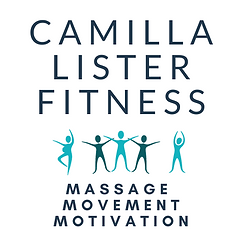What type of activity is safe as I start to move into my 2nd trimester of pegnancy?
- Camilla Lister

- Aug 4, 2019
- 3 min read
Updated: Dec 2, 2021
I get asked all the time if it is safe to run during pregnancy, especially when I meet new clients at the start of this trimester who may have been feeling particularly tired and sick up until now, and have not been active at all. The answer, as ever, is really this: if you are a runner and have been running throughout your 1st Trimester, then you can certainly continue to run. I strongly recommend however, that you keep an eye on your heart rate and temper the intensity of your pace. Ultimately it will be your body that tells you whether to keep on going through out T2 and beyond. Lets have a chat and if you are keen to keep running I can give you a prescriptive approach to monitoring your intensity. If you aren't a runner however, now is clearly not the time to start, and likewise if you haven't been running in quite some time, it is inadvisable to start now. Consider that the body is already dealing with an influx of new stresses into its system, and adding a new high impact sport may be just a step too far.
Running aside, the 2nd trimester can be a wonderful time for exercise; your body is filled with lovely feel good hormones, you likely are starting to feel less tired and certainly to start with are not carrying too much excess weight. It is certainly a good time to be either continuing or introducing a moderate programme of exercise to your weekly routine. You should easily be able to manage thirty minutes or so of moderate physical activity (such as walking, cycling, aerobics or swimming) three to seven days each week without difficulty. Of particular benefit at this time is resistance training; exercises to strengthen all the major muscles or your body to help prepare yourself for labour. Its not called labour for nothing after all! So focusing on strengthening your thighs, glutes and hamstrings and your upper back, shoulders and arms to simply help you cope with life pre birth and of course all the physical stress post birth of lifting, carrying and feeding a little person. Finally, now is the best time to get started on how to connect your breathing with your pelvic floor and deep core system and to learn how to control the intra-abdominal pressure you are bound to experience over the next 6 months and post natally.
Other things to be aware of, as you progress in pregnancy; your body will start to produce a hormone called relaxin, which combined with progesterone, helps to loosen your joints in preparation for a growing baby and labour. So be mindful of this laxity, it may make your joints feel a little loose and strange! Also best to avoid extreme sports involving high impact, deep sea diving or the intense heat of Bikram Yoga.
And talking of extreme temperatures, be cautious not to allow yourself to over heat whether through exercise, or using a sauna or hot tub; research has found that excessive exposure to high temperatures from as early as the 1st trimester can increase the risk of Neural Tube Defects and possibly other such malformations of the fetus*.
Finally, if you have read anything here you would like to learn more about or are interested in resistance training sessions with a female pregnancy personal trainer, please get in touch and lets chat!
* Source: Duong HT, Shahrukh Hashmi S, Ramadhani T, Canfield MA, Scheuerle A, Kim Waller D, et al. Maternal use of hot tub and major structural birth defects. Birth Defects Res A Clin Mol Teratol. 2011;91(9):836–41. Epub 2011 Jun 6. [PubMed]






Comments